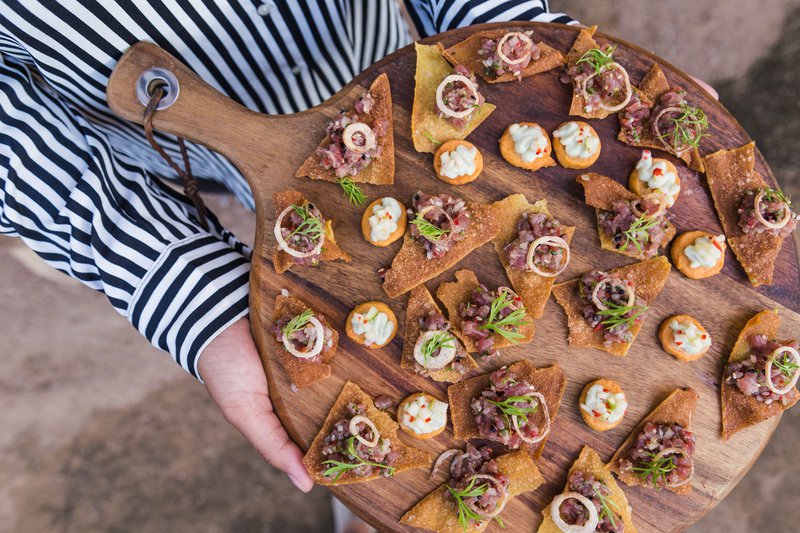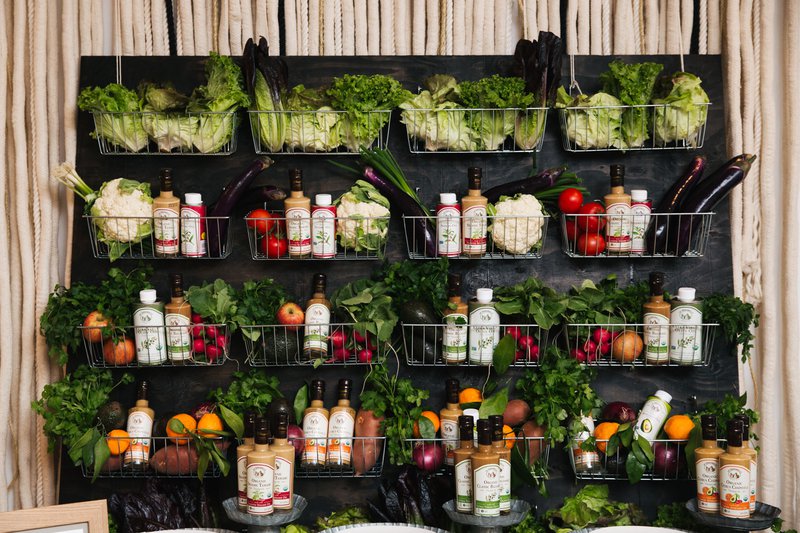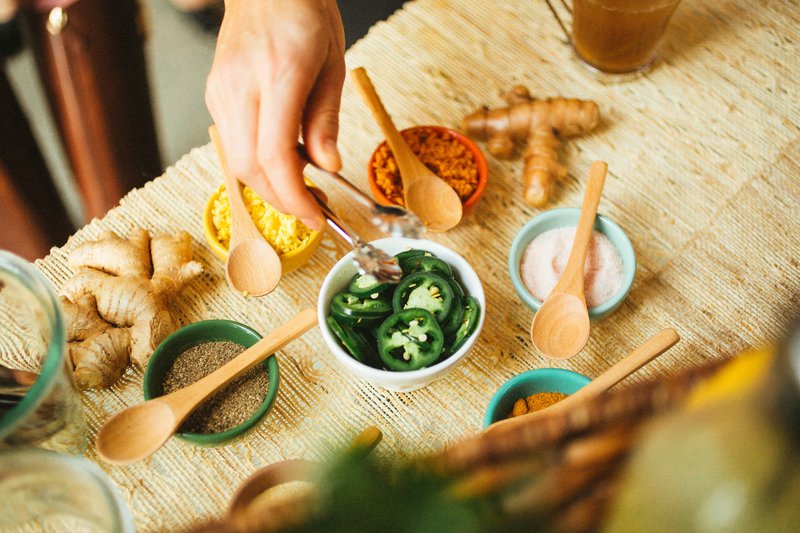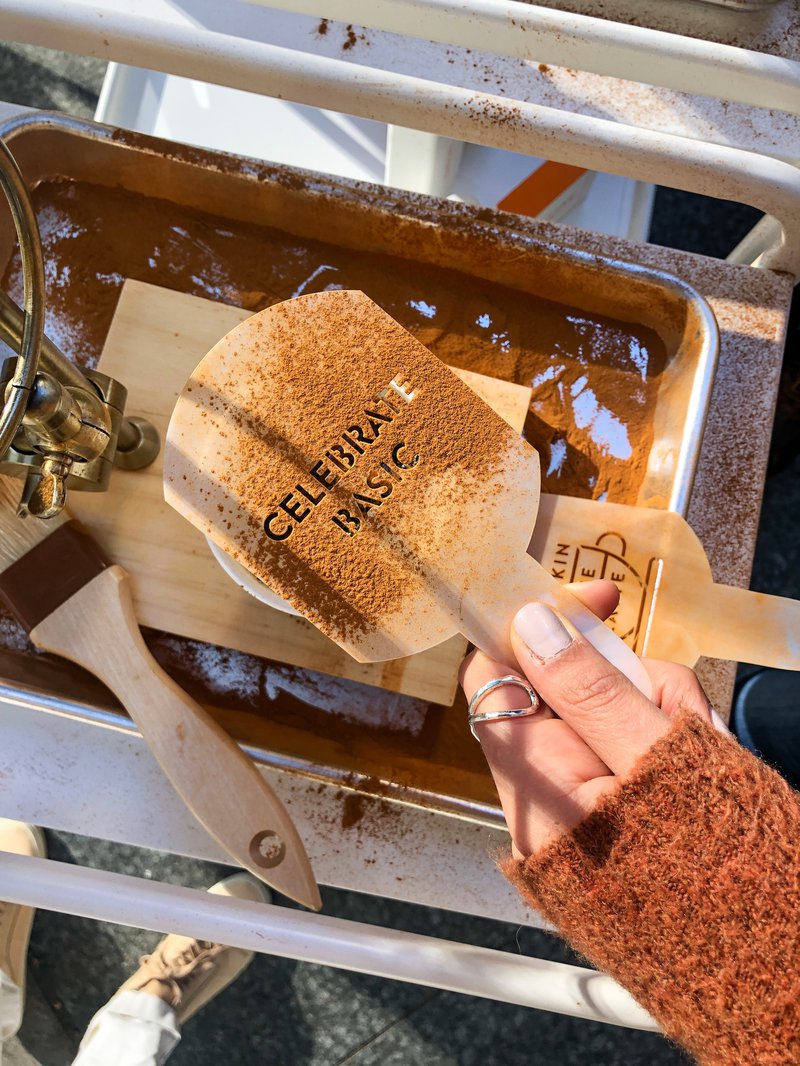3 Experiential Tips to Make the Most Out of Your Next Sampling Experience

Our guest blog this week comes from Cynthia Samanian of Hidden Rhythm, an experiential marketing agency for natural food and wellness brands. Cynthia and her team have produced intimate influencer dinners, large-scale pop-ups, and everything in between for clients including Bare Snacks, Bob's Red Mill, and Native.
Are you gearing up for the upcoming slew of holiday markets and trade shows? Sampling your product at festivals, markets, and trade shows can be a very smart move to grow your brand’s awareness. There’s no better way to showcase your tasty granola or fruity kombucha than to have it in the hands - and mouths - of your target consumer.
But, let’s not ignore the fact that sampling requires a significant investment of time, effort, and money, especially if you’re snagging a booth at one of the larger trade shows. Plus, spending the cash to get there doesn’t mean you’re guaranteed exposure or foot traffic. You may find yourself in a sea of hundreds or even thousands of other brands, vying to attract attention.
This means that you need to be incredibly tactical about how you set up your brand for sampling success. In this blog, I’ll share my three tips to help you make the most out of your next sampling experience.
Through working with natural food and wellness brands including Bare Snacks, Bob’s Red Mill, and Native, I’ve designed and produced experiences to engage guests and increase brand retention. From a massive apple orchard pop-up to a PSL-themed coffee and donut truck, I’ve worked with a variety of formats. Not all sampling events are going to be this elaborate, but regardless of size and no matter how or where you pop-up, there are key experiential marketing principles that’ll elevate your sampling setup.
Tip #1: Draw them in
People eat with their eyes. While you may have the creamiest coconut yogurt or the most refreshing yuzu juice, your target customer may walk right past your booth without even getting to try it. How sad would that be? This is why you need to draw them in with a visually strong event identity, especially in a competitive trade show setting.
You might already be familiar with brand identity work, especially if you have a product out there in the market. Think logos, color palette, typefaces -- all that good stuff. But, have you spent the time to understand your brand’s event identity? Your event identity represents how your brand shows up offline. It’s not just your brand colors, but also the textures that align with your brand. French white marble or distressed white wood? Galvanized metal or polished chrome? Plush velvet or rustic linen?
Ultimately, you want to create a mood board for your event identity that includes your logo, colors, textures, fabrics, patterns, scents, and anything else you think translates your brand into a physical space. This serves as your North star in everything you do, whether it’s a 6-foot display table or a large trade show booth.
Having trouble finding inspiration? Look inside your living room, kitchen, or even your closet. Textures are all around us and once you spot those that fit your event identity, it’ll be impossible to un-see them!
Once you have your event identity, you can begin sourcing your booth design props and decor with greater focus and efficiency!

La Tourangelle Artisan Oils’ Salon de Salade event by Hidden Rhythm. Photo credit: Erin Conger
Tip #2: Make it engaging
If you can create an experience that engages your guests, then your brand is more likely to be remembered long after they've left. While you’ll still want to have your product sampled in the traditional manner, think about how you can step up your sampling experience with something more than just the usual grab-and-go?
Ask yourself:
- How can your guests learn something quickly?
- How can they customize what they're sampling?
- Is there something they can leave with that keeps them engaged after the event?
These questions can help you hone in on your brand’s “signature experience”, which is an engaging activity you can replicate every time you sample. Don’t worry, it’s ok to be repetitive and actually a bonus in helping guests recall what you’re all about.
Examples of signature experiences include:
- Cocktail (or mocktail) garnish bar stations
- Build-your-own parfaits (this is great for brands that are the base or the topping!)
- DIY spice blend jars
- Bone broth seasoning station

Kettle & Fire’s Spring into Superfoods event by Hidden Rhythm. Photo credit: Erin Conger

Native’s PSL Pop-Up by Hidden Rhythm. Photo credit: Native Cos.
Perhaps your product is a packaged snack bar and isn’t meant to be garnished, DIY’d, or anything else listed above. Don’t worry! You can still create an engaging and memorable experience. Consider creating your signature experience around your brand, rather than a specific product.
For example, if your snack bar is meant to be eaten after workouts, then how can you insert your brand into the relevant context? Maybe you could create a simple, customizable gym bag tag station?
While your signature experience takes time and money to set up and source, if you invest in it upfront, you'll be able to replicate it any time you pop up. And it’ll become less and less work to manage each time.
One thing to keep in mind is that you want to keep the experience to just a few minutes at most. Otherwise, your guests will lose attention, have sampling FOMO and move on to the next booth.
Also, expect that some people aren’t going to want to engage. Many will just come by to get a free sample and walk away. But, there will be people who will be wowed by your brand and will be excited to get to experience all your booth has to offer.
Tip #3: Stay connected
Your booth is just one touchpoint in the relationship with your target customer, so make sure to keep the conversation going in order to make the most out of your sampling.
In the future, you’ll have big updates to share including bringing your product to more stores, selling branded workshops, and offering promotions. But how will you market all of this exciting news if you let people just take a sample and walk away?
Whether you use a pen and paper or an iPad, collect as many email addresses as you can at your sampling event. As a bonus, ask the simple yes/no question: “have you heard of our brand before today’s event?” Understanding who is coming to your booth and if they’ve been exposed to your brand in the past can help you assess the impact of the event.
Lastly, you’ll most likely need to offer an incentive to get people to sign up. People can be shy about giving out their emails, so think about how you can make it worth their while. Consider offering a promo code, special deal, or incentivize them with a giveaway. (Need partners to make the giveaway happen? Parsnip has your back!)
With these three tips in hand, you’ll be well on your way to making the most out of your next sampling event. Remember, you’re making a huge investment of time and money to bring your brand to life offline; make sure you give it the best shot you can at standing out!
If these tactics have inspired you to dig deeper, then join me for my upcoming live virtual workshop, How to Sample with Style, on November 20th! I’m sharing my step-by-step framework to attract attention at your next sampling event. You’ll also get a digital workbook and a 30-minute 1-on-1 coaching call with me. If you can’t make the live training on the 20th, you can still register and watch the video whenever you want. You’ll have lifetime access to the training and workbook. Snag your spot here!
Cynthia is the Founder & CEO of Hidden Rhythm, an experiential marketing agency for natural food and wellness brands. In addition to event design and production, Cynthia and her team create online content and workshops to empower early-stage brands to reap the powerful benefits of the offline world. Cynthia is the host of The Experiential Table podcast which uncovers inspiration, tactics, and resources to help brands elevate their events into engaging and impactful experiences.


